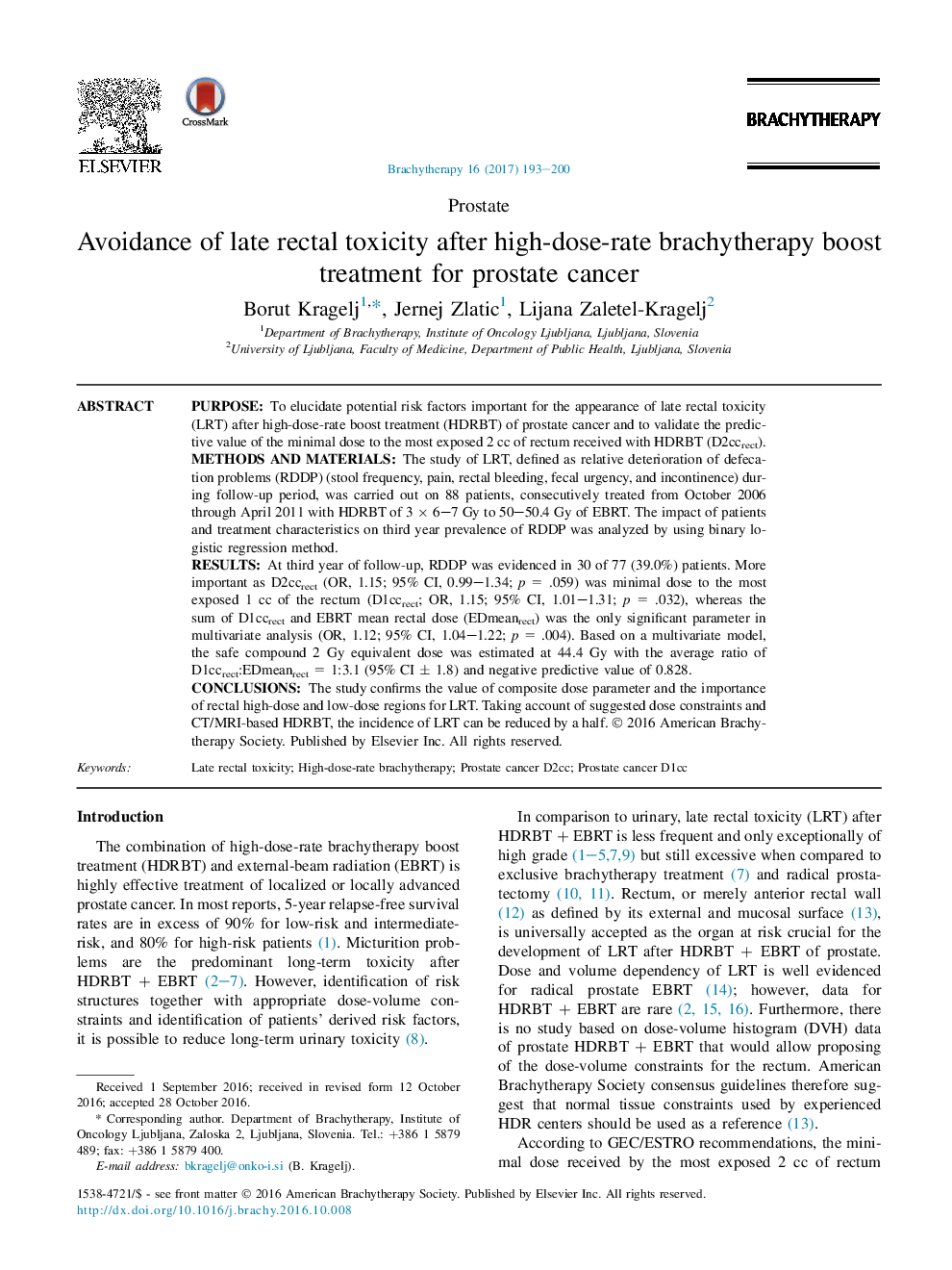| Article ID | Journal | Published Year | Pages | File Type |
|---|---|---|---|---|
| 5697208 | Brachytherapy | 2017 | 8 Pages |
PURPOSETo elucidate potential risk factors important for the appearance of late rectal toxicity (LRT) after high-dose-rate boost treatment (HDRBT) of prostate cancer and to validate the predictive value of the minimal dose to the most exposed 2 cc of rectum received with HDRBT (D2ccrect).METHODS AND MATERIALSThe study of LRT, defined as relative deterioration of defecation problems (RDDP) (stool frequency, pain, rectal bleeding, fecal urgency, and incontinence) during follow-up period, was carried out on 88 patients, consecutively treated from October 2006 through April 2011 with HDRBT of 3 Ã 6-7 Gy to 50-50.4 Gy of EBRT. The impact of patients and treatment characteristics on third year prevalence of RDDP was analyzed by using binary logistic regression method.ResultsAt third year of follow-up, RDDP was evidenced in 30 of 77 (39.0%) patients. More important as D2ccrect (OR, 1.15; 95% CI, 0.99-1.34; p = .059) was minimal dose to the most exposed 1 cc of the rectum (D1ccrect; OR, 1.15; 95% CI, 1.01-1.31; p = .032), whereas the sum of D1ccrect and EBRT mean rectal dose (EDmeanrect) was the only significant parameter in multivariate analysis (OR, 1.12; 95% CI, 1.04-1.22; p = .004). Based on a multivariate model, the safe compound 2 Gy equivalent dose was estimated at 44.4 Gy with the average ratio of D1ccrect:EDmeanrect = 1:3.1 (95% CI ± 1.8) and negative predictive value of 0.828.ConclusionsThe study confirms the value of composite dose parameter and the importance of rectal high-dose and low-dose regions for LRT. Taking account of suggested dose constraints and CT/MRI-based HDRBT, the incidence of LRT can be reduced by a half.
